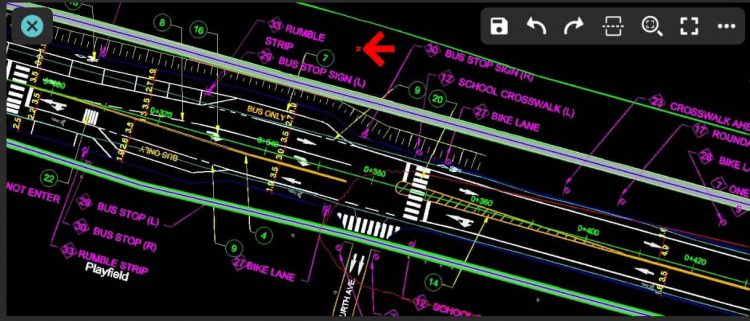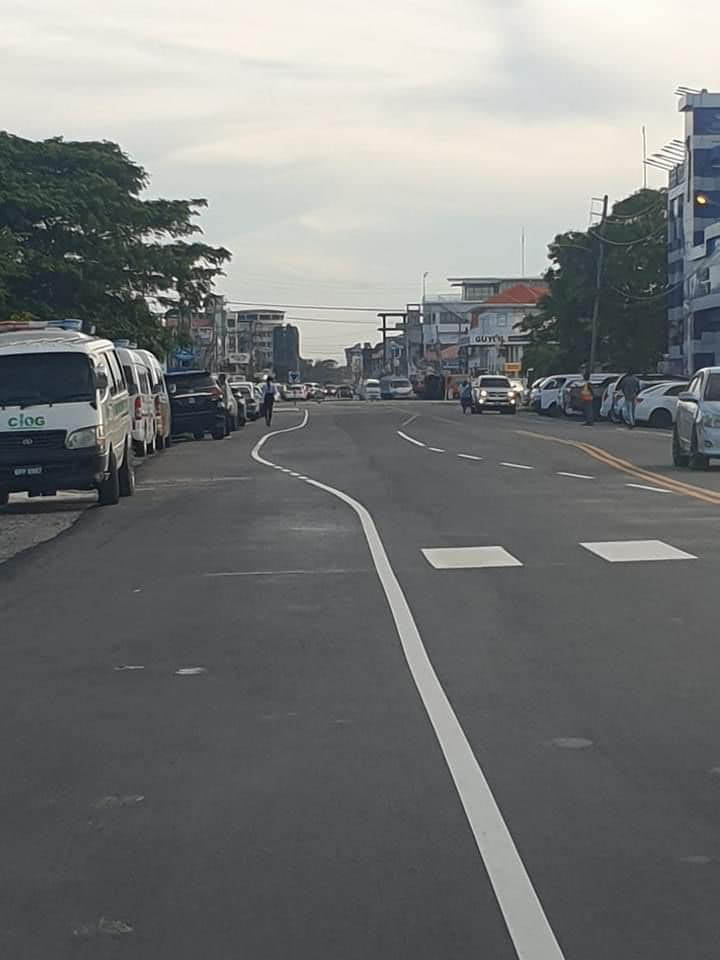Contractors executing the signage on the Sheriff Street/Mandela Avenue road project have been instructed to complete the works in sections according to Minister within the Ministry of Public Works, Deodat Indar, as he explained that this was necessary to prevent road users from becoming confused.
On Monday, a number of road users took to social media complaining and expressing confusion over the signage which is currently being painted on the road.

The incomplete road signage resulted in many users being unclear of the lanes they should be utilising as in some sections the lines are straight and then are curved. The road signage also creates a path for cyclists and easy turn offs from Sheriff Street into side streets. Along some parts of the road, the customary two lanes divide into three lanes to facilitate turning vehicles before merging back into two lanes.
Indar yesterday explained to this newspaper that the project was designed to be four lanes but due to existing boundaries, it is wide at some sections and narrow at others.
He said he considers the new road markings as well put together and once completed, he is sure road users will be able to read and easily navigate their way.
Many more arrows and road safety indicators are still to be in place before road users can have a clear understanding of the road design.
“Please be patient and not be misguided, upon completion, the road Markings will have to cater for cycle lane, turnoff, right of way, bus stop etc,” the Minister explained on Monday night after concerns about the signage were ventilated.
According to Indar, having met with the contractors from Sinohydro, SRKN’gineering and Associates, EGIS Group, Cevon’s Waste Management, and others, he is confident that they will be able to complete the works in sections for the benefit of road users.
The contractors have until the 30th of this month to complete the project, Indar noted.
During a tour of the road earlier this month, it was explained that in the vicinity of the Arapaima Bridge, two lanes along Sheriff Street will transition into a four-lane road which should not present any traffic-flow issues since all the users have to do is follow the road markings. The four-lane transition will lead all the way to Distribution Services Limited (DSL), on Mandela Avenue.
Heading south, the road will have another transition after going over the Lamaha Bridge. The purpose of this transition is to alleviate the flow issues that are seen at the Homestretch Avenue junction. One of the contractors explained that the median in this area has a two way turning and it goes from a broad to narrow width or has a ‘belly’. The reason for this is as you approach the intersection there is a slip lane so there are two lanes and upon turning, it becomes three lanes. This slip lane serves to accommodate right turns without holding up traffic. There will also be a roundabout at the turn that is commonly referred to as the ‘Multilateral School turn’.
At the next transition, which will be at Mandela Avenue, leading all the way to the first cross street in Alexander Village the road will then flow from a four lane road to a two lane road leading to Georgetown.
The four lanes at Mandela will flow smoothly into the four lanes leading to the East Bank highway. He acknowledged that the new challenge with this section would be when the road will have to be closed for works to be done.
This newspaper reported that the project had drifted behind schedule last year and several sub-contractors had to be engaged in a bid to speed up the work and return to schedule. It was previously estimated that the project would take two years to complete. The project was handed over to Sinohydro early in 2018 after the contract was awarded and work commenced in the latter part of the year. The contract is pegged at US$31.03 million and is being financed by the Inter-American Development Bank.






